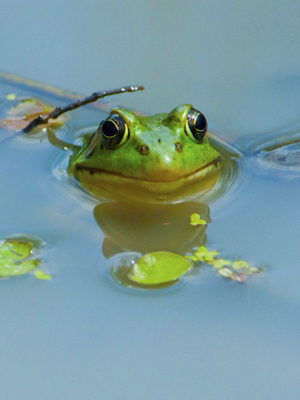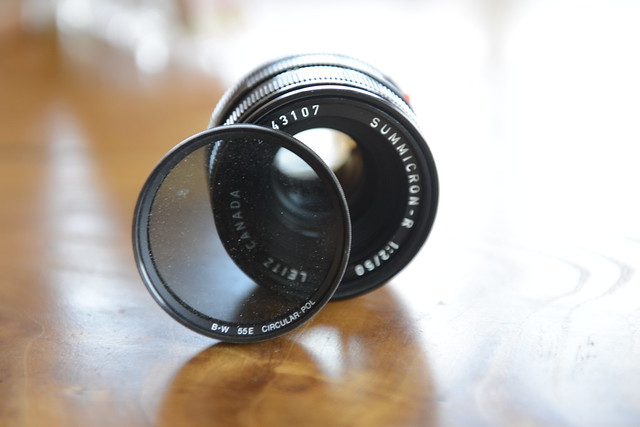I live in Nova Scotia (45 degrees N Lat) and the frogs are just this week beginning to call. I have the patience to sit by my pond, and I have nice enough gear (Nikon D7200, tripod, shooting in RAW and the ACDSee editing program).
In the past I have had a very hard time with the reflection of light from the water, no matter where I sit in relation to the sun. It always washes out the frog.
Before I give up on the subject altogether I thought that I would ask if has anyone had success in getting a nice shot of a frog's head and eyes without it being washed out by light reflections? Are there particular settings that can make the shot work?
Thanks.
Results 1 to 16 of 16
Thread: Photographing frogs
-
17th April 2016, 01:51 PM #1

- Join Date
- Jul 2015
- Location
- Nova Scotia, Canada
- Posts
- 11
- Real Name
- Alan Appleton
Photographing frogs
-
17th April 2016, 02:03 PM #2
re: Photographing frogs
Have you tried a polarizing filter?
-
17th April 2016, 03:09 PM #3
re: Photographing frogs
Hi Alan,
Welcome to the CiC forums from me, great to have you join us.
If the frog is mostly submerged (which it sounds like it is), as Dan says, a (circular) polarising filter is something you must try.
That link is to a Wikipedia page on them which contains, amongst other examples, a pair of images showing the effect without/with CPL on the surface of water, scroll down just over half way to see them.
Cheers, Dave
-
17th April 2016, 03:45 PM #4

- Join Date
- May 2012
- Location
- northern Virginia suburb of Washington, DC
- Posts
- 19,064
Re: Photographing frogs
A polarizer will be a tremendous help whether or not the frog is submerged. Even so, when the frog is not submerged there will be situations in which you will have to make a compromise between eliminating specular reflections on the frog and eliminating glare on the water; that's because sometimes both cannot be eliminated at the same time. I would always go for eliminating the specular reflections on the frog but not everyone would agree.
One issue to consider is that when eliminating the glare on the water, in some environments it is difficult to then easily identify that there is water in the scene.
If you regularly shoot outdoors, you'll love having a polarizer for lots and lots of uses more than just photographing water.
-
17th April 2016, 04:15 PM #5
Re: Photographing frogs
I'll add my agreement to the polarizer. I have several and will mount one on virtually any lens I head out with for daytime photography, even in cloudy conditions. They kill the reflections off any non-metallic surface quite nicely and let you penetrate the reflections on the surface of the water. They result in sharper images when grass or leaves are involved as these all reflect scattered light to some extent. In landscape work, they give you a nice, deep blue sky with contrasty clouds, if you are shooting at roughly right angles to the sun.
The polarizer is one of the few filters than cannot be emulated in post-processing software.
If you are looking at buying one, make sure you get a circular polarizer, not a linear one. The linear type tend to be less expensive, but your camera will not meter or focus properly if you use one of these. When you screw in the filter, just make sure that you don't overtighten, as they can be a pain to remove. Another thing to be aware of is that you will lose a good 1-1/2 stops of light when you use one. The camera's meter will meter correctly, but you will have to adjust the aperture, shutter speed or ISO.

-
17th April 2016, 06:48 PM #6

- Join Date
- Jan 2009
- Location
- South Devon, UK
- Posts
- 14,812
Re: Photographing frogs
Have you tried spot metering, Alan? Even then, some exposure compensation may be needed.
One option is to experiment with settings until you find something which works then set your camera using manual settings. Sometimes you can mess about with other subjects of similar brightness to obtain some approximate settings before your 'model' arrives.
Setting an exposure for the main subject may turn the surroundings dark but you can usually recover something from the shadows during editing.
When not using manual settings, I shoot in Aperture Priority mode for this sort of shot. Never full auto.
-
18th April 2016, 02:32 AM #7
Re: Photographing frogs
Small obstacles are what make this hobby so much fun, don't be discouraged so easily there is always a solution. Looking forward to seeing some of your hits and misses.
-
18th April 2016, 02:58 PM #8

- Join Date
- Jul 2015
- Location
- Nova Scotia, Canada
- Posts
- 11
- Real Name
- Alan Appleton
Re: Photographing frogs
Thanks to all for suggestions. Talk of a polarising filter sent me to look in the box with my long neglected Nikon film SLR and I found that I had purchased two polarising filters 30 years ago and have not used them since. They are both circular filters, a 52 and a 55 so they will fit some of the lenses that I currently use.
I can see that I will have lots of fun using them outdoors, and not just for frogs.
Thanks to all for links and suggestions . . . Alan
-
18th April 2016, 07:09 PM #9
Re: Photographing frogs
Hi Alan,
If they are that old, they will almost certainly be Linear polarisers, not Circular (which does not refer to their shape), unless they specifically say "Circular" or "CPL" or "C-PL" on their rims.
They will very likely cause you AF and metering problems at some angles of rotation, if not all, but as they are there, no harm giving them a try, at least.
Cheers, Dave
-
18th April 2016, 07:34 PM #10
Re: Photographing frogs
Probably Dave, but I have a CPol that I bought in 1980, so that type of filter was certainly around. My Leica R3 uses a semi-silvered pellicle mirror as the main mirror. Light passes through it and is reflected onto a secondary, hinged mirror that reflects light onto the spot metering cell in the base of the camera. A CPol is required for accurate metering. It was a stock item at the camera store I was dealing with, so they were certainly available back then.
That being said, I suspect you are likely right and these old polarizers are linear and not going to work on the D7200.
Alan - unless there is a C or CP or CPol marking on the filters, Dave is likely right. We tend to refer to this style of filter as "round", not circular.Last edited by Manfred M; 18th April 2016 at 07:40 PM.
-
19th April 2016, 07:10 AM #11
Re: Photographing frogs
Alan I would certainly give your old polarising filter a try.
I read that older polarisers are often linear and do not work (or cause some problem) with digital cameras but I found the one I bought in the late 1960s works with my DSLR without any problems. Thereore, in my limited experience, either the problem is not that great or circular ploarising filters were readily available many years ago.
Dave
-
19th April 2016, 07:41 AM #12
Re: Photographing frogs
I found much the same as Dave in that an old linear polarizer worked on a Nikon D200 without any apparent problems. I would never use one for critical situations but for frogs when you are likely to go to manual focus I would be surprised if it was an utter disaster.
You could of course wait until one turns up in the evening to look in through the window of a door.

-
19th April 2016, 11:01 AM #13

- Join Date
- May 2012
- Location
- northern Virginia suburb of Washington, DC
- Posts
- 19,064
Re: Photographing frogs
When I saw the OP's post about circular polarizers from 30 years ago, I too wondered if they had been manufactured that long ago. So I went to Wikipedia's explanation of them. I didn't find any information about when they were first made but I was humored by the article's demonstrations of the effects of using a polarizer. One of them is a pair of photos of a frog in water.
-
19th April 2016, 01:00 PM #14
-
19th April 2016, 03:49 PM #15

- Join Date
- Jul 2015
- Location
- Nova Scotia, Canada
- Posts
- 11
- Real Name
- Alan Appleton
Re: Photographing frogs
Both of my old polarising filters are Tamrons, marked P.L
I suspect that they are linear and not circular polarisers, but I am going to give them a try anyway. It's cold today so there are no frogs calling, but there are crocuses (croci?) and Siberian Squill to photograph, and we will see what we will see.
And I will try them first with a Nikon D50 (thanks to Paul, suggesting that they worked with a D200).
Thanks to all . . . Alan
-
19th April 2016, 04:24 PM #16
Re: Photographing frogs
Alan - what I would suggest you do is to check out both the metering and autofocus capabilities. The easiest way to determine if there is any significant effect would be to take a shot where the polarization effect is maximized, take a shot and then turn the polarizer by 90 degrees (without changing the camera view) and repeating to see how well the camera deals with both situations. If you have a longer, slower lens (perhaps one that is f/5.6 or slower wide open at the maximum focal length), it would be interesting to see if the lens can focus.

 Helpful Posts:
Helpful Posts: 
 Reply With Quote
Reply With Quote


